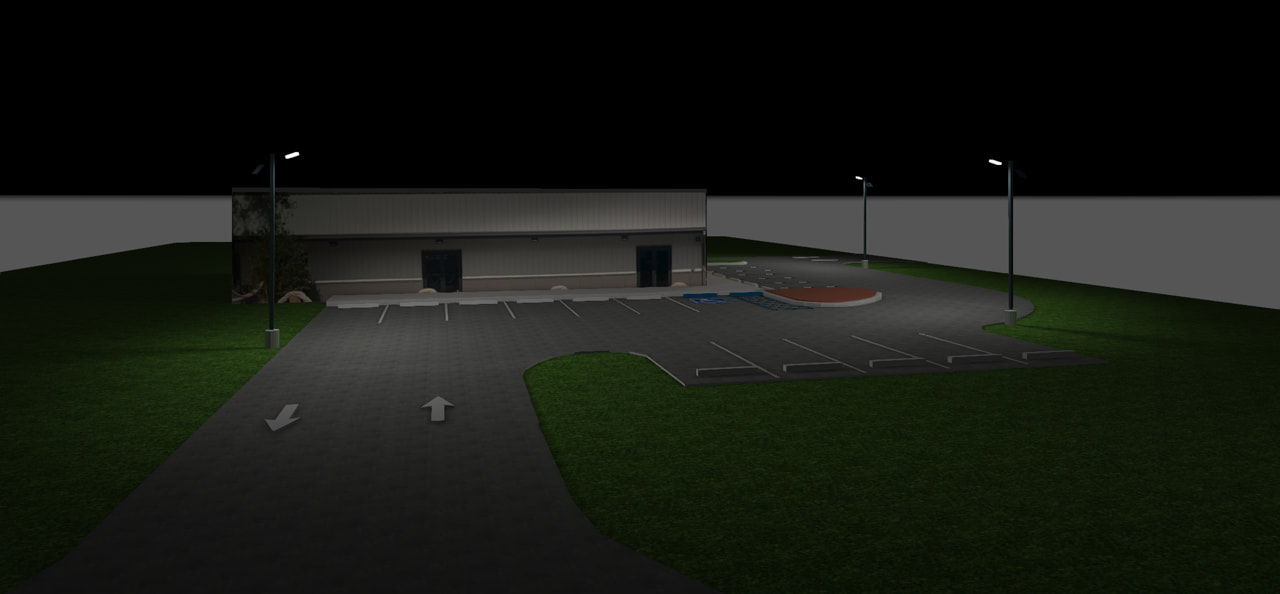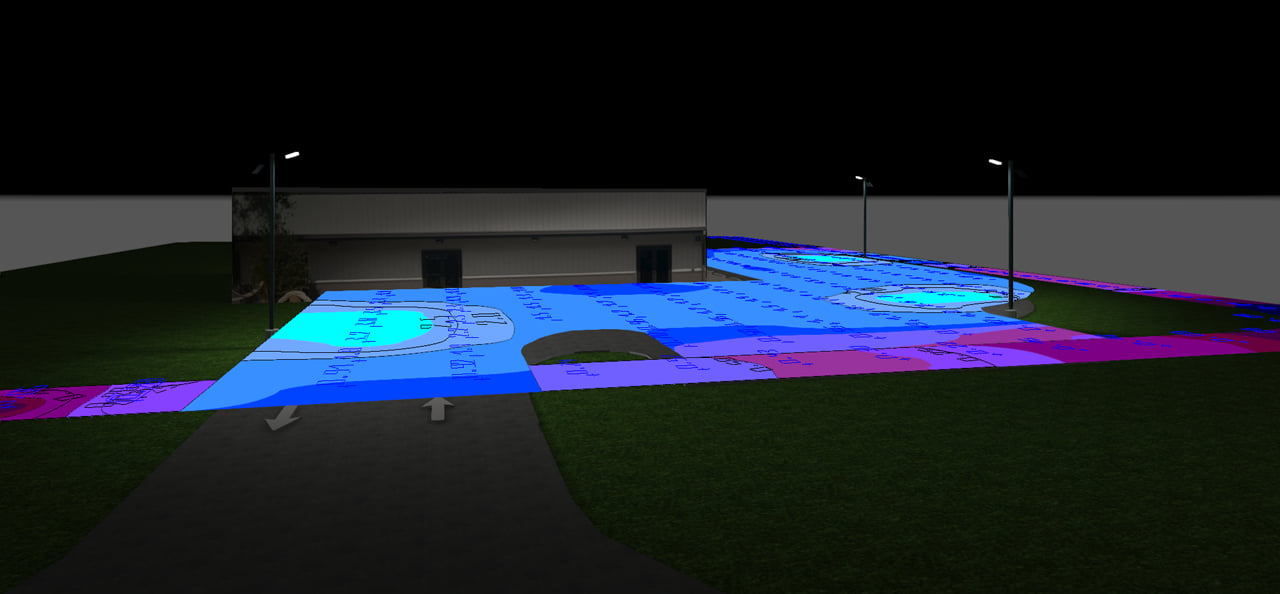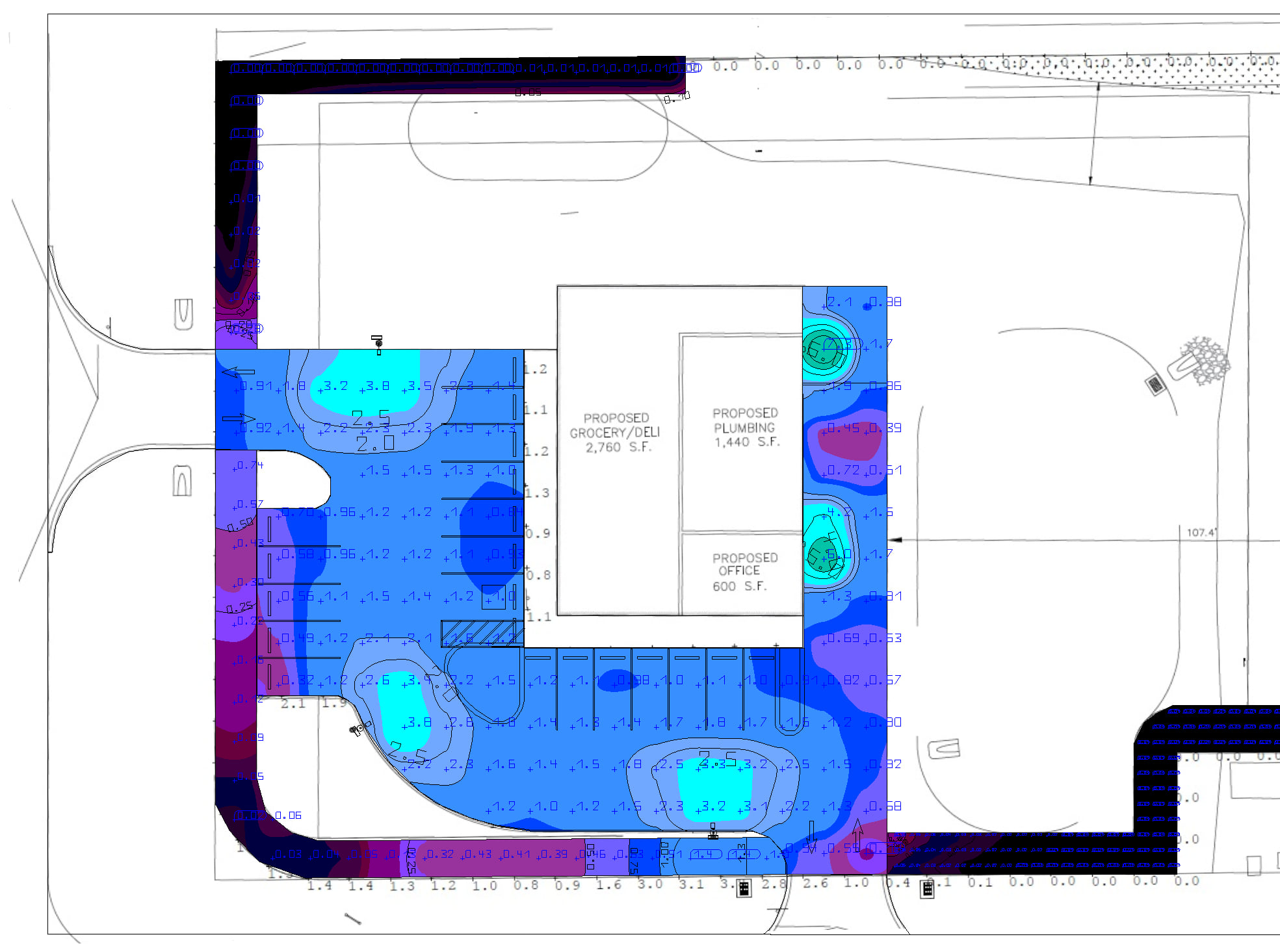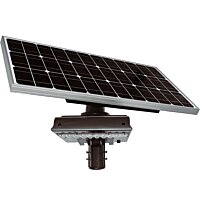Types of LED Solar Lights
Solar Area/Flood Lights - Solar area or flood lights are designed to illuminate large spaces with a wide, powerful beam of light. They are typically used to enhance security in outdoor areas such as parking lots, playgrounds, and yards. These lights are powered by solar panels, making them energy-efficient and easy to install anywhere sunlight is available.
Solar Pathway/Bollard Lights - Solar pathway or bollard lights are compact, standalone fixtures commonly used to light paths, walkways, and driveways. Bollards are short, sturdy posts that provide practical, low-level lighting while also serving as visual and physical barriers. These lights are solar-powered, ensuring easy installation without the need for electrical wiring and providing a reliable light source from dusk till dawn.
Solar Wall Packs - Solar wall packs are mounted on exterior walls and are designed to illuminate outdoor areas such as building perimeters, entryways, and walkways. These fixtures are solar-powered, making them an environmentally friendly solution that reduces energy costs and simplifies installation by eliminating the need for electrical wiring.
Solar Street Lights - Solar street lights are tall poles with a light fixture on the top and are primarily used to light streets, roadways, and other expansive outdoor public areas. They harness solar energy through panels typically mounted on the top of the pole, making them self-sufficient and environmentally friendly. Solar street lights are designed for dusk-to-dawn performance, providing high visibility and safety after dark.
Professional Solar Lighting Design



Here’s an example of a solar lighting photometric design constructed by our professional lighting engineers. In this example, A customer constructed a corner grocery store with an existing 19-car (12,000 sq ft) parking lot. Installing conventional area lights would have incurred significant additional costs due to the need for underground cable trenching, which would have damaged the existing lot. The estimated costs for trenching and cabling for just three poles were projected to be around $8,000.
The scope included three 50W Area Lights which provided an average 1.61 footcandles; enough light to meet IES recommended illumination for suburban parking lots (1.0 fc). Thus, trenching and trenching damage is avoided. Now the customer will have parking lot lights without disruption to the parking lot and an annual power savings,
Off-Grid v.s. On-Grid Solar Lights
Diving into the realm of solar flood lights, it is essential to understand the key differences between off-grid and on-grid systems. The terms 'off-grid' and 'on-grid' refer to the connection or lack thereof to the state's electricity grid.
Off-grid solar systems, also known as stand-alone power systems (SAPS), operate independently of the grid. These systems generate power through solar panels and store excess power in batteries for later use. This independence from the grid ensures a constant supply of electricity, even during grid outages or blackouts. However, initial setup costs for off-grid systems can be higher due to the need for battery storage.
On the other hand, on-grid solar systems, or grid-tie solar systems, are tethered to the local utility grid. These systems generate power when the sun is shining, and when excess power is produced, it can be fed back into the grid. This can offset electricity costs through a process known as net metering. However, these systems do not provide power during a grid outage since they are designed to shut down when the main grid is off, primarily for safety reasons.
Commercial Solar Lighting
Commercial solar lighting is an eco-friendly, cost-effective solution for illuminating outdoor and indoor spaces in various commercial settings. Utilizing solar panels to capture sunlight and convert it into electricity, these systems store power in batteries for use during nighttime or cloudy conditions, ensuring consistent lighting without reliance on traditional power grids.
Typical applications of commercial solar lighting include,
Parking Lots and Garages: Solar lights provide ample illumination for vehicles and pedestrians, enhancing safety and security.
Pathways and Parks: Ensuring paths are well-lit to improve accessibility and reduce accidents in public recreational areas.
Building Perimeters: Wall-mounted solar lights enhance visibility around buildings, deterring unauthorized access and enhancing safety.
Signage and Billboard Lighting: Solar lights can be used to illuminate signs and billboards, making them visible at night without the high energy costs associated with traditional lighting.
Streets and Roadways: Large solar street lights are used to light roadways and streets in commercial areas, improving visibility for drivers and pedestrians alike.
Dusk To Dawn Solar Lights
Transitioning from the broader category of solar flood lights, we now focus on a specific type: dusk to dawn solar lights, which offer unique benefits and functionality. These lights are designed to automatically switch on at dusk and off at dawn, providing round-the-clock illumination without human intervention.
One of the main advantages of dusk to dawn solar lights is their energy efficiency. As they only operate between sunset and sunrise, they conserve energy during the day, when natural light is abundant. This not only reduces the strain on the solar panel but also extends its lifespan.
Another appealing feature of these lights is their superior safety and security aspects. By maintaining consistent overnight illumination, they deter potential trespassers and enhance visibility, thus reducing the likelihood of accidents in poorly lit areas.
Furthermore, their automatic functioning eliminates the need for manual operation, making them an ideal choice for locations that are difficult to access or for individuals who prefer a low-maintenance lighting solution.
Solar Light Battery Power
Integral to the efficacy of dusk to dawn solar lights is the role of battery power, which ensures uninterrupted operation from sunset to sunrise. The battery, charged by the photovoltaic cells during the day, stores energy that will be used to power the solar flood lights after the sun has set.
The capacity of the battery determines the duration of light output. Hence, a high-capacity battery will provide power for a longer period, contributing to the overall efficiency and effectiveness of the solar flood light. Most solar flood lights use either lead-acid, NiMH, or lithium-ion batteries, with lithium-ion batteries being the most common due to their longevity and efficiency.
However, battery life and performance can be affected by several factors, such as temperature variations and overcharging. As such, advanced solar flood lights come equipped with a battery management system. This system protects the battery from damage and extends its lifespan by regulating the charging and discharging process.
Frequently Asked Questions
Q. How Long Do Solar Flood Lights Typically Last?
The longevity of these products can vary based on several factors such as the quality of the product, usage, and environmental conditions.
However, typically, such lighting systems, when fully charged, can provide illumination for approximately 8 to 12 hours.
Moreover, the light-emitting diodes (LEDs) used in these systems have a general lifespan of around 50,000 hours, while the solar panels can function effectively for 20 to 25 years.
Q. Are Solar Flood Lights as Bright as Traditional Flood Lights?
The brightness level of any type of lighting largely depends on the number of lumens it produces. Traditional flood lights are typically brighter due to their higher lumen output.
However, advancements in technology have significantly improved the lumen output in other lighting options as well. Therefore, while they may not be as bright as traditional models, certain modern alternatives can provide comparable brightness levels, depending on their specifications and intended use.
Q. What Maintenance or Upkeep Do Solar Flood Lights Require?
The maintenance required typically involves routine cleaning of the light panels to remove dust and debris that could hinder their efficiency. Additionally, it is crucial to ensure their placement allows for maximum sunlight exposure.
The rechargeable batteries may also need replacing every few years. However, the exact maintenance schedule can vary depending on the specific product and location. Some models may include additional features requiring unique upkeep protocols.
Q. Can Solar Flood Lights Withstand Extreme Weather Conditions?
Yes, products designed for outdoor use are typically engineered to withstand extreme weather conditions. This includes high and low temperatures, as well as heavy rain, snow, and wind.
However, the level of weather resistance can vary between different models and brands. It's recommended to check the product specifications for details on its weather resistance capabilities.
Regular maintenance and proper installation can also enhance the product's ability to withstand harsh weather.
Q. Are There Any Environmental Benefits to Using Solar Flood Lights?
Yes, there are numerous environmental benefits to employing this type of lighting solution.
It utilizes the sun's energy, a renewable resource, thus reducing reliance on non-renewable power sources.
It also minimizes carbon emissions, contributing to the mitigation of global warming.
Furthermore, these lighting devices often have batteries that store excess power for use in low-light conditions, promoting energy efficiency.












